If you’re a serious aquarium fan, you understand how important it is to provide a safe and clean habitat for your aquatic friends. Sterilizing rocks before putting them in your aquarium is one important step in accomplishing that. You should read about it because, believe me, it will improve your aquatic paradise.
You might now be asking why sterilizing rocks is so crucial. Consider it a shield that will safeguard your favorite fish and water plants. Untreated rocks may contain unwelcome bacteria, algae, and other impurities that can ruin the ecosystem of your aquarium. But don’t worry! You can guarantee a spotless and flourishing underwater paradise by comprehending the necessity of sterilization and knowing the proper approaches.
We’re going to drive deeply into the topic of rock sterilization for aquariums, so grab your diving gear and get ready. Prepare to reveal the techniques for expertly sterilizing rocks for your aquarium. Let’s dive in!
Understanding the Need for Sterilizing Rocks for Aquarium
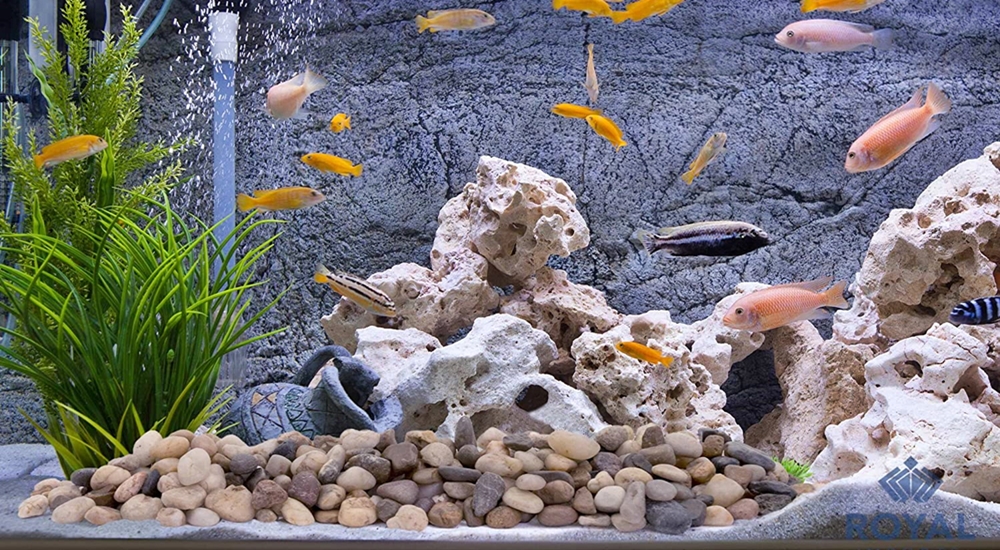
It is important to sterilize rocks before adding them to an aquarium to prevent the introduction of harmful bacteria, parasites, and other organisms that could harm your fish. Rocks that have not been sterilized can also leach harmful chemicals into the water, which can be toxic to fish.
Potential risks associated with untreated rocks
It’s critical to be aware of any concerns that untreated rocks may have when using them in your aquarium. The delicate balance of your aquatic environment may be harmed by a number of issues caused by improper sterilization.
Rocks that have not been treated may contain dangerous materials like heavy metals, poisons, or pollution. These pose a major risk to the health of your fish, invertebrates, and plants when they leak into the water. Even rocks from natural areas, such as rivers or beaches, may contain invisible toxins that could destabilize the delicate ecosystem you’re trying to establish.
Algae growth, bacteria, and other contaminants
The quick growth of algae on untreated rocks is one of the key issues. Algae need nutrients to grow, and rocks can offer the ideal surface for algae to attach to and grow on. In addition to affecting your aquarium’s looks, an excessive amount of algae can reduce the amount of oxygen present and harm the aquatic life within.
On untreated rocks, germs and other toxins can also travel along with them. These bacteria have the ability to harm your fish and other aquatic life by bringing illnesses or infections into your aquarium. You may drastically lower the risk of such toxins by sterilizing rocks, giving your underwater buddies a clean and secure habitat.
Understanding these dangers emphasizes how crucial it is to take the required precautions to sanitize rocks before adding them to your aquarium. By doing this, you can reduce the likelihood of bacterial infections, an overgrowth of algae, and other potential issues that could endanger the health of your aquatic habitat.
Preparing for Rock Sterilization
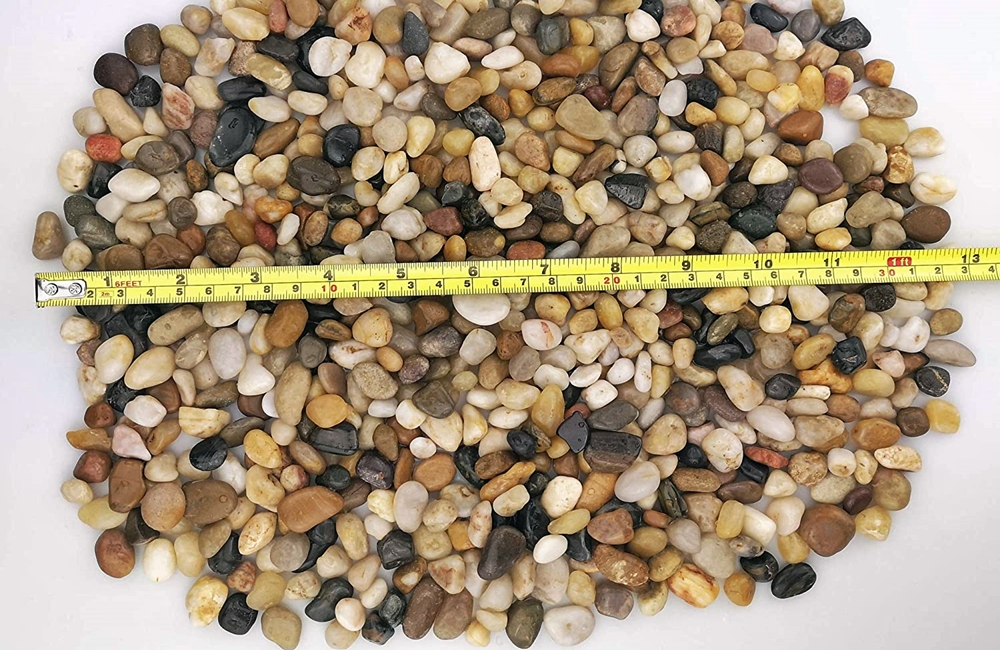
If you’re planning on adding rocks to your aquarium, it’s important to sterilize them first. This will help to prevent the introduction of harmful bacteria, parasites, and other organisms that could harm your fish. Let’s walk you through the steps of preparing rocks for sterilization.
Gathering necessary supplies and equipment
You must assemble all the required ingredients and tools before beginning the rock sterilization trip. Here is a list of what you’ll require:
Rocks: Make sure you have a variety of rocks that are appropriate for use in aquariums. Search for inert, non-toxic rocks that won’t affect the chemistry of the water. Avoid rocks with protruding or potentially brittle edges.
Bucket or container: You will require a clean bucket or container that is big enough to hold the rocks you intend to sterilize. It should only be used for aquariums and be clean of all chemical traces.
Scrub brush or toothbrush: During the sterilizing procedure, the rocks will need to be scrubbed and cleaned with a brush or toothbrush with soft bristles.
Water source: To rinse the rocks before and after sterilization, you’ll need access to a clean water source, such as tap water.
Sterilization method-specific supplies: You might require extra equipment, such as a kettle for boiling, a bleach for dilution, an oven for baking, or vinegar/hydrogen peroxide for chemical sterilization, depending on the sterilization method you select (boiling, bleaching, baking etc.).
Choosing the right type of rocks for your aquarium
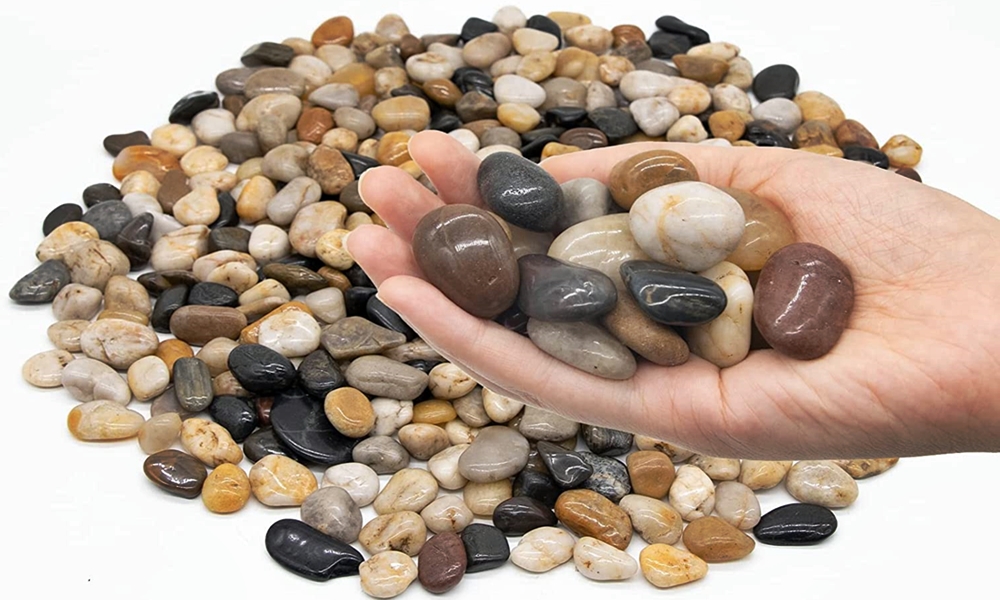
It’s essential to pick the proper rocks for your aquarium in order to create a secure and beautiful environment. Look for non-porous materials such as lava rocks, quartz, granite, or slate. Because these rocks won’t hold onto dangerous substances or bacteria, your aquarium will remain cleaner and healthier.
By selecting rocks that are pH-neutral, take into account the pH factor. The health of your fish and plants depend on stable water chemistry, which is maintained by doing this. Avoid placing rocks where the water’s pH or alkalinity could be drastically changed because this could stress or injure your aquatic inhabitants.
Size and shape are important, too. Choose rocks that are appropriate for the size of your aquarium and won’t crowd the area. Avoid rocks with jagged edges that could cut your swimming companions or harm equipment. Your aquarium’s surroundings will be both aesthetically beautiful and secure if you can strike the perfect balance between practicality and beauty.
So remember, go for non-porous, pH-neutral rocks that are the right size and shape for your aquarium. And don’t forget to choose rocks that add that extra touch of visual charm to your aquatic oasis. With the right rocks, your aquarium will become a stunning underwater masterpiece.
Methods of Sterilizing Aquarium Rocks
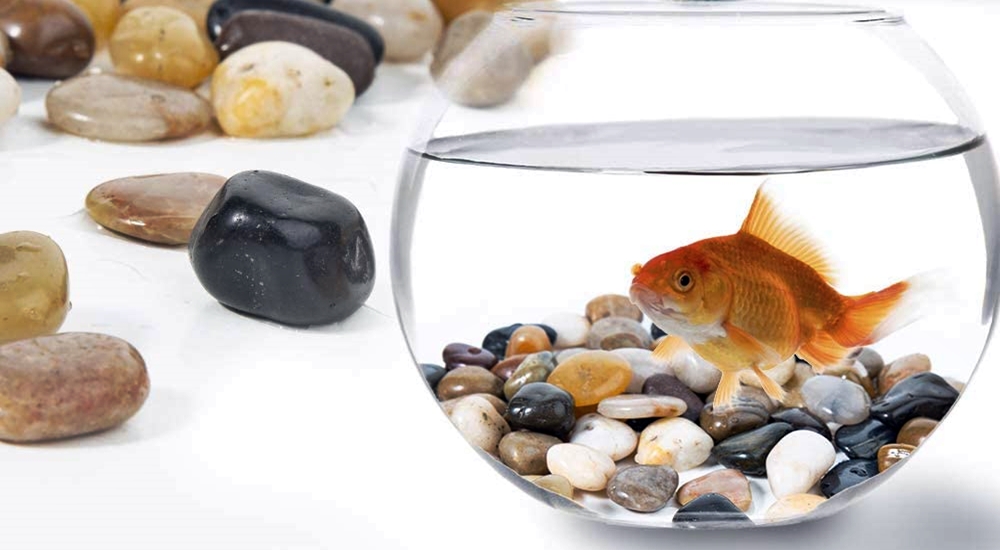
Here is a table that summarizes the pros and cons of the different methods of sterilizing rocks:
| Method | Pros | Cons |
|---|---|---|
| Boiling | Effective | Can damage delicate rocks |
| Bleach | Effective | Can be harmful to fish if not rinsed thoroughly |
| Baking | Effective | Can take longer than other methods |
| Vinegar or hydrogen peroxide | Effective | May not be as effective as other methods |
| Chemical sterilizers or commercial products | Effective | Can be expensive |
Method: Boiling rocks for sterilization
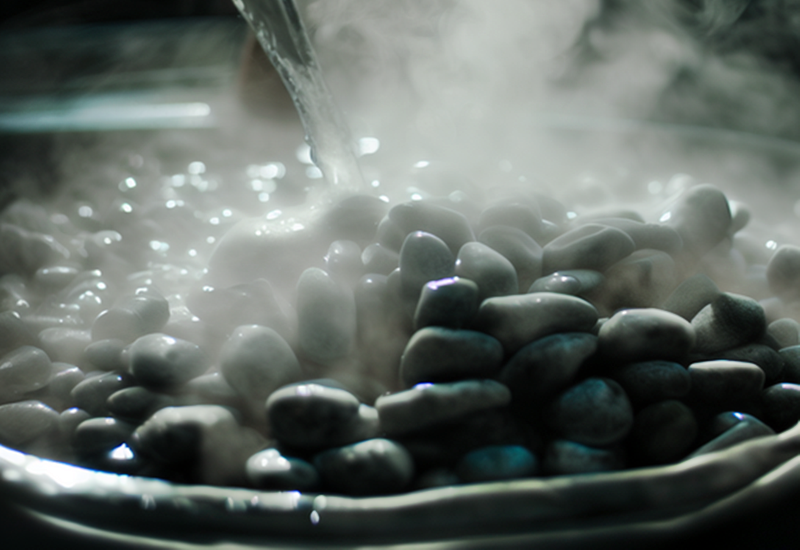
One common and efficient way to sterilize rocks before adding them to your aquarium is to boil them. Following is a step-by-step procedure:
The rocks should first be given a thorough cleaning by being rinsed under running water to get rid of any loose dirt or debris. Next, select an appropriate container big enough to fit the rocks and set it aside just for aquarium usage. Water should be added to the pot until the rocks are completely submerged and are at least a few inches above the water line. Bring the water to a rolling boil in the saucepan by placing it on a stove.
Once the water is boiling, carefully add the rocks, and then let them simmer for at least 10 to 20 minutes. After boiling, remove the saucepan from the heat and let the rocks cool naturally. Keep in mind to keep your hands away from the hot rocks to avoid getting burned. After they have cooled, take the rocks out of the pot and thoroughly wash them under running water to get rid of any residue.
Last, but not least, go over the rocks for any evidence of pollution or lingering debris. Before adding them to your aquarium, let them fully dry by air.
Precautions
- Make sure the rocks are solid and can endure boiling without collapsing or breaking.
- To prevent burns, exercise caution when handling the hot pot or rocks.
- High mineral content rocks should not be used since they could release minerals into the water when it is boiling.
By following these steps and precautions, you can effectively sterilize rocks through boiling, making them safe for your aquarium environment.
Method: Bleaching rocks for sterilization
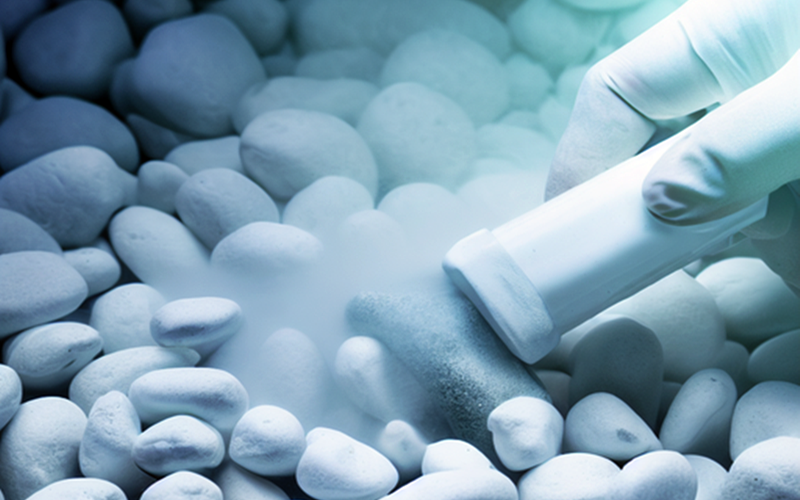
Another efficient way for sanitizing rocks before adding them to your aquarium is bleaching. Here are the essential actions to take:
Safety precautions and proper dilution: Make a bleach solution by combining regular home bleach with water. One part bleach to nineteen parts water is the suggested ratio. To prevent breathing in fumes, put on safety gloves and work in a well-ventilated location. Make sure there are no chemicals, scents, or dyes in the bleach you use.
Cleaning and rinsing techniques after bleaching: Start by giving the rocks a good wash under running water to get rid of any loose dirt or debris. Then, make sure the rocks are completely submerged in the bleach solution. To guarantee proper sanitation, let them soak for around 24 hours.
After the time of soaking, take the rocks out of the bleach solution and thoroughly rinse them under running water. To get rid of any bleach residue, it’s imperative to rinse the rocks several times. If you can still smell bleach after sniffing the rocks, keep rinsing them until the bleach is entirely gone.
Allow the rocks to thoroughly air dry once they have been rinsed and cleaned of any bleach residue. Make sure they are positioned in a spot that is clean, dry, and free from pollutants and sunlight.
You can properly bleach rocks to disinfect them by following these instructions. But it’s vital to remember that bleaching rocks might change how they look. Therefore, before including bleached rocks in your aquarium, think about their aesthetic impact.
Method: Baking rocks for sterilization
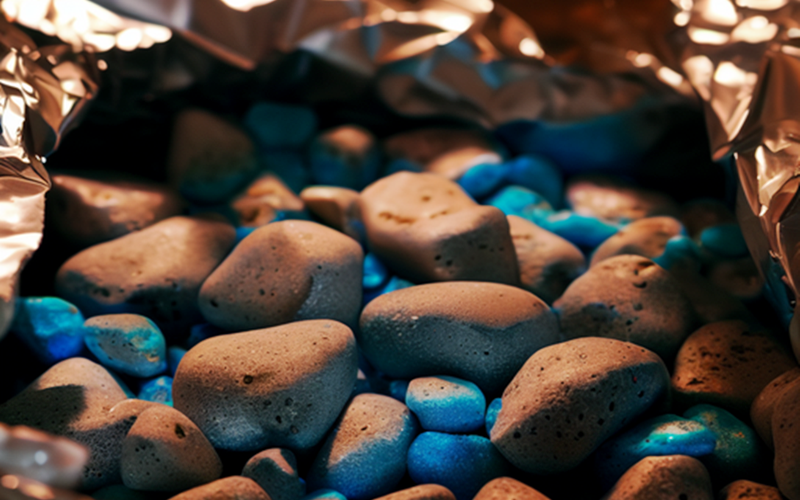
Before adding rocks to your aquarium, baking them is a dependable way to sterilize them. What you need to know is as follows:
Temperature and duration guidelines for baking: Set your oven to 250°F (120°C) for preheating. To avoid direct touch, place the rocks on a baking sheet lined with parchment paper or aluminum foil. For about an hour, bake the rocks at this temperature. Any potential pollutants on the rocks are effectively killed by this time and temperature.
Precautions for cooling and handling
After baking, switch off the oven and let the rocks cool completely within. When touching the rocks, use caution as they may continue to emit heat even after cooling. To prevent burns, put on heat-resistant gloves or oven mitts.
Carefully remove the rocks from the oven once they have cooled. As a result of the intense heat, rocks may show symptoms of damage or cracking. Throw away any rocks that seem damaged.
It is advised to rinse the rocks under running water to get rid of any debris or particles that might have accumulated during the baking process before placing them in your aquarium. Before adding the rocks to your aquarium, let them thoroughly dry by air after rinsing.
These instructions will let you effectively disinfect rocks by baking. To avoid mishaps or injury, put safety first and handle hot rocks with caution.
Method: Using vinegar or hydrogen peroxide for sterilization
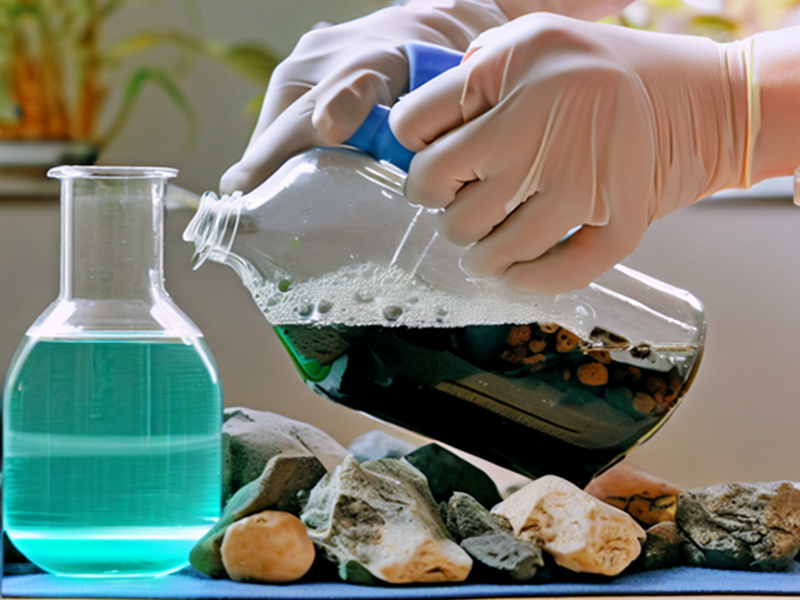
An alternative option for sanitizing rocks before adding them to your aquarium is to use vinegar or hydrogen peroxide. Here is how to go about it:
Procedures for using vinegar or hydrogen peroxide
Start by making a vinegar or hydrogen peroxide solution. Combine vinegar and water in a 1:1 ratio for vinegar. 3% solution of hydrogen peroxide should be used. Make sure the rocks are completely submerged in the solution. For the solution’s sterilizing effects to take effect, let them soak for around 24 hours.
Remove the rocks from the solution after the time has passed for soaking. Rinse them well under running water to get rid of any leftovers. If there are any obstinate impurities, gently scrape the rocks with a scrub brush or toothbrush. This will make sure the area is thoroughly cleaned.
Rinse and drying methods post-treatment
Following treatment, it is vital to rinse the rocks one more to make sure there are no lingering vinegar or hydrogen peroxide traces. Rinse them thoroughly under running water to get rid of any vinegar or peroxide odors.
Allow the rocks to completely air dry after rinsing. Place them away from direct sunlight and other potential contaminants in a spot that is clean and well-ventilated. Before adding them to your aquarium, make sure they are completely dry.
It’s important to remember that employing vinegar or hydrogen peroxide may somewhat change the rocks’ look. Be sure to take into account this aesthetic influence when adding them to your aquarium.
You can disinfect rocks with vinegar or hydrogen peroxide by following these steps and carefully cleaning and drying them. This technique offers an alternative choice for making sure your aquatic friends are in a clean and secure habitat.
Alternative methods: Chemical sterilizers or commercial products
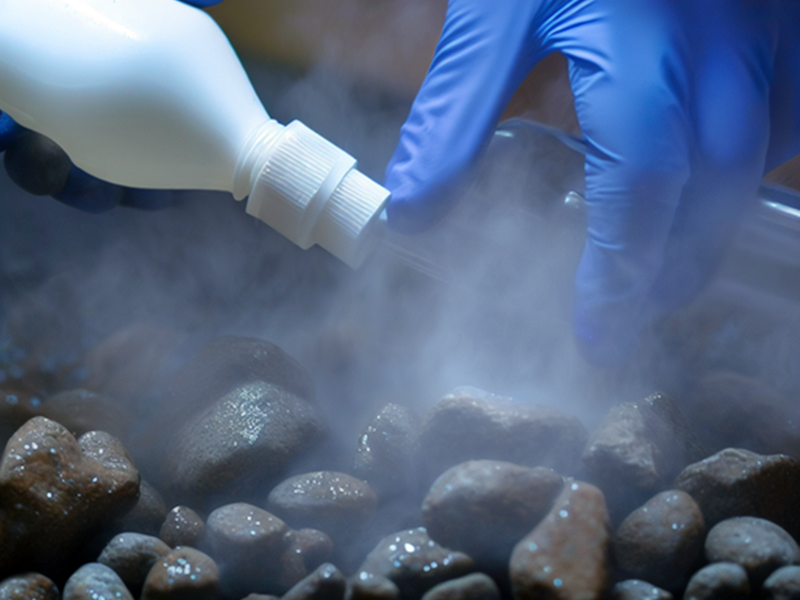
Chemical sterilizers or commercially available items are viable alternatives if you prefer alternative techniques for sterilizing rocks. What you need to know is as follows:
Overview of available chemical sterilizers
There are many chemical sterilizers available on the market. These products frequently have components that aid in cleaning rocks of bacteria, algae, and other pollutants. Chlorine-based solutions, iodine-based solutions, and specialist commercial goods designed for rock sterilization are a few examples of chemical sterilizers.
Safety considerations and product recommendations
It’s imperative to follow the manufacturer’s directions when using commercial products or chemical sterilizers. Pay attention to any safety warnings and dose or dilution ratio recommendations. Use items without any dangerous ingredients, scents, or colors that can hurt the fish in your aquarium.
Choose trustworthy products that have been widely used and endorsed by seasoned aquarists to assure the security of your aquarium. Search for items that have been particularly labelled for rock sterilization and that have received favorable feedback regarding their efficacy and safety.
Rinse the rocks well under running water to eliminate any remaining chemicals before introducing them to your aquarium if they have been cleaned with commercial or chemical sterilizers. This action reduces any possible negative impacts on the aquatic environment.
Always put the health of your aquarium’s occupants first, and carefully assess if commercial products or chemical sterilizers are safe for your particular setup. When selecting and utilizing these alternative techniques, get guidance from aquarium experts or speak with other aquarists in order to make an informed selection.
Precautions and Tips for Sterilizing Rocks
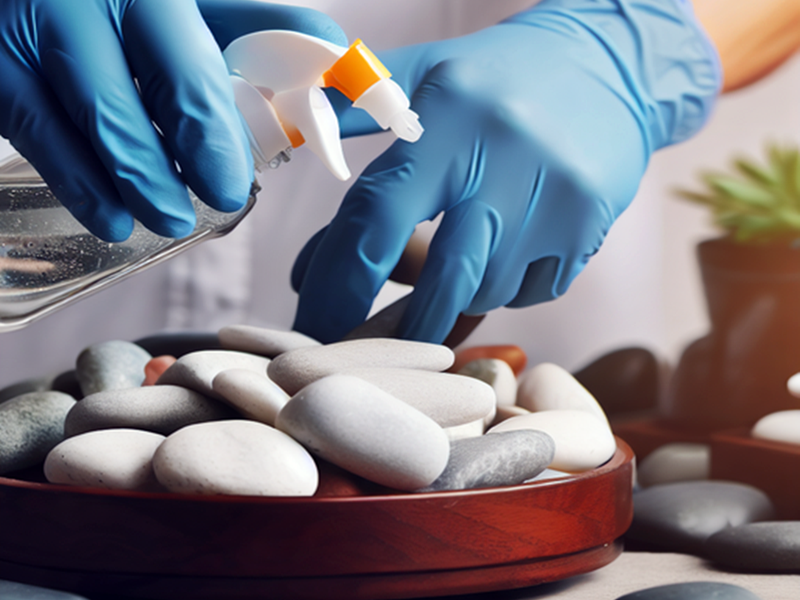
When sterilizing rocks for your aquarium, it’s important to prioritize safety. Here are some precautions to follow:
Wear protective gloves: Put on protective gloves to shield your hands from potential burns, heat, and chemical contact while being sterilized.
Use appropriate tools: To handle the rocks while they are heated or submerged in sterilizing solutions, use tongs, tweezers, or other suitable instruments. Burns and accident risks are reduced as a result.
Avoid sudden temperature changes: Allow rocks to naturally cool and refrain from subjecting them to abrupt temperature changes, which may cause them to fracture or split.
Avoiding toxic substances or harmful chemicals
Think about the following to ensure the residents of your aquarium are safe:
Use aquarium-safe substances: Use materials that are safe for aquariums and refrain from utilizing rocks that may contain heavy metals or harmful compounds. To make sure the rocks are suitable for your aquarium, look up the composition of the rocks or speak with specialists.
Select non-toxic sterilization methods: Pick sterilization techniques that won’t expose the rocks to poisonous chemicals or leftovers. Boiling, baking, using vinegar or hydrogen peroxide, and other techniques are typically regarded as secure.
Avoid using household cleansers: Do not use household detergents or cleaners on aquarium rocks. These might include substances that are toxic to aquatic life.
Testing rocks for safety before introducing them to the aquarium
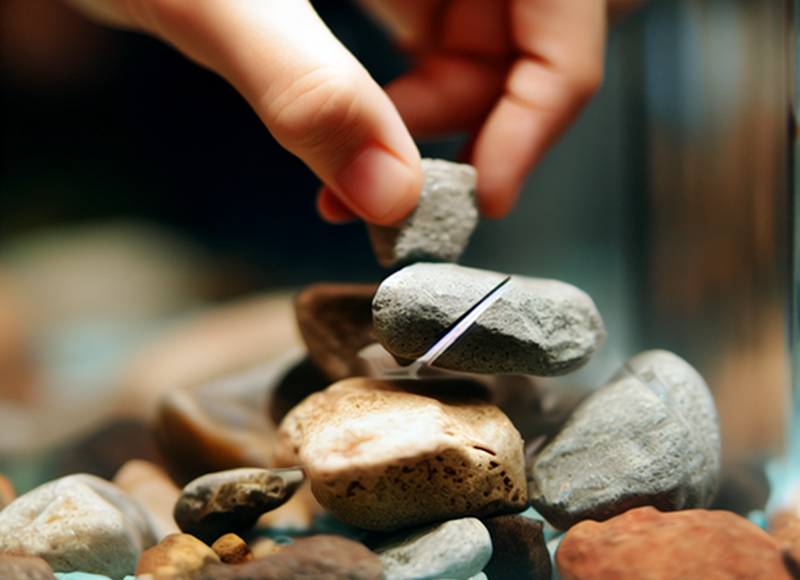
Before adding sterilized rocks to your aquarium, it’s crucial to test their safety:
Perform a pH test: Place a little piece of rock in a different container of water to determine the rock’s pH. To make sure the rocks don’t dramatically change the water’s chemistry, keep an eye on the pH level of the water over a few days.
Observe for changes: After sterilization, keep an eye out for any changes in the rocks’ texture, color, or the presence of any strange materials. Rocks that have undergone significant alteration or discoloration may not be acceptable for aquarium use.
Start with a small quantity: When adding sterilized rocks to your aquarium, begin by using a modest amount. To make sure the rocks are secure and have no negative consequences, keep an eye on the behavior of your aquatic wildlife and the water’s environmental factors.
You can reduce potential risks and guarantee the security of your aquarium when sterilizing and adding rocks according to these safety precautions and testing processes. Maintaining a healthy and prosperous undersea environment requires placing a high priority on the welfare of your aquatic life.
Cleaning and Maintaining a Sterile Aquarium
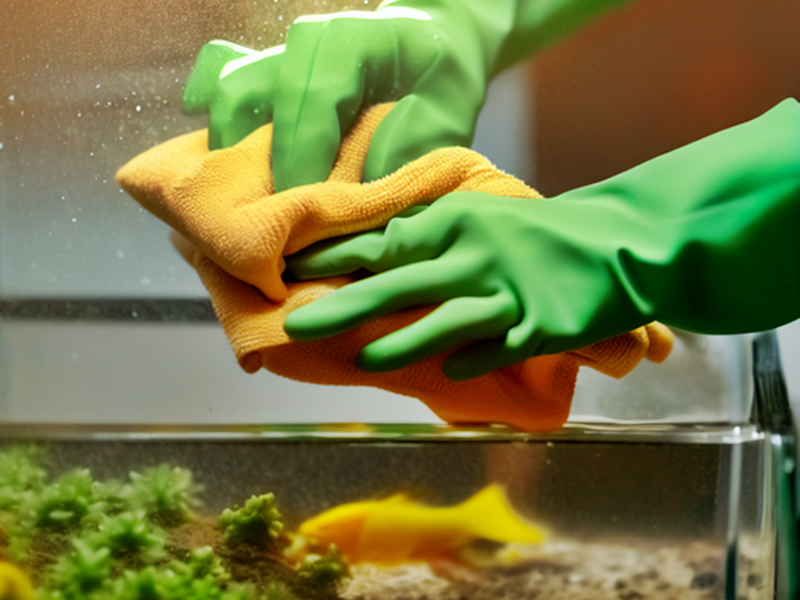
It’s crucial to thoroughly rinse and clean the aquarium rocks you’ve sterilized before putting them in the tank. Rinse the rocks thoroughly under running water to get rid of any leftover sterilants, dirt, or loose objects. If there is any lingering dirt, algae, or contamination, thoroughly inspect the rocks and, if necessary, gently scrub them with a soft brush or toothbrush.
Remember, your aquarium is a little ecosystem that relies on your stewardship. By following the sterilization techniques and implementing proper maintenance practices, you're providing a safe and clean home for your fish to thrive.
Consider quarantining the rocks in a different container for a few days if you have any doubts about their cleanliness or if you fear that they may contain contaminants. Check the aquarium’s water quality and the rocks’ state to make sure they don’t introduce any harmful chemicals.
You may also read: How To Sterilize Driftwood For Aquariums?
Proper placement and arrangement of rocks in the aquarium
Arrange the rocks to resemble natural formations like caverns, fissures, or rock formations. In addition to giving fish hiding spots, this gives the tank visual interest. Make sure the rocks are firmly in place and won’t shift, perhaps harming the aquarium or the creatures inside. If more support is required for larger rocks, use aquarium-safe silicone or epoxy.
Do not overcrowd the tank with rocks as this may restrict the amount of swimming space available to the fish and impede water circulation. Give space for maintenance access as well as adequate space for the fish to swim freely.
Regular maintenance routines for a clean and healthy aquarium
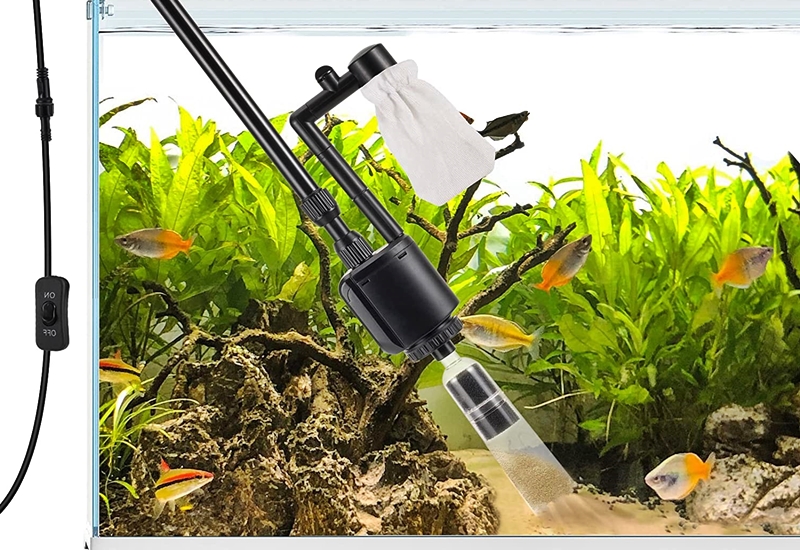
Include the following maintenance practices to maintain a clean and healthy aquarium habitat. To get rid of pollutants, extra nutrients, and accumulated garbage, perform routine water changes. By doing so, unwanted bacteria or algae cannot flourish and the quality of the water is preserved.
To clean the substrate and get rid of trash, uneaten food, and fish waste, use a gravel vacuum or siphon. This helps maintain water clarity by preventing the accumulation of organic debris. Maintaining adequate lighting levels, controlling nutrient levels through regular feeding and fertilization, and routinely cleaning algae from the rocks and glass surfaces are ways to monitor and control the growth of algae.
Check the pH, ammonia, nitrite, nitrate, and temperature of the water frequently to make sure they are within the limits required for the different fish and plant species in your aquarium. Establish a routine maintenance program that covers duties like filter cleaning, equipment inspections, and rock inspections for any indications of wear or contamination.
You can keep your aquarium sterile and provide your aquatic pets with a clean, healthy, and attractive habitat by adhering to these cleaning and maintenance procedures.
Wrapping Up!
Alright, fellow aquarium hobbyists, we’ve finished the process of sterilizing the aquarium rocks. I sincerely hope you’ve found this guide useful and instructive. It’s important to keep in mind that sterilizing rocks is a necessity for any conscientious aquarist who wants to guarantee the well-being of their aquatic friends.
Remember, a little extra effort in sterilizing rocks now can save you from potential headaches down the line.
Place the rocks in the aquarium strategically, rinse and sanitize them, and continue your regular cleaning and maintenance schedules. With a little extra work, you can create a flourishing aquarium that enhances the beauty and calm of your house. Happy fish keeping and happy sterilizing!

